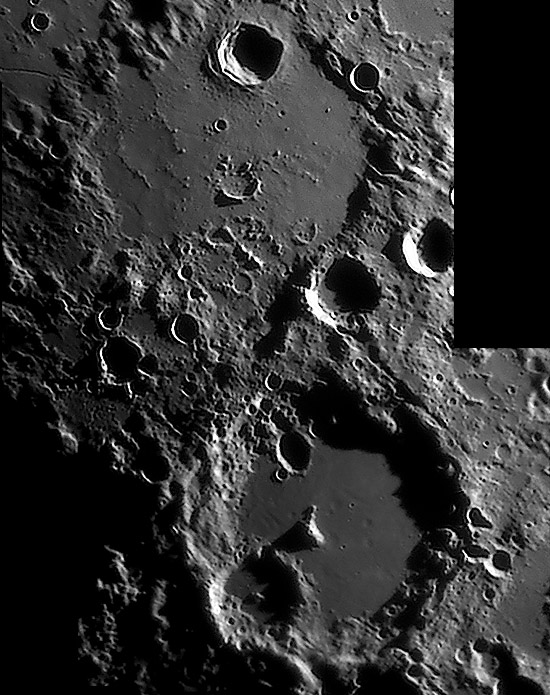December 3, 2017
Buried Clues
Originally published May 28, 2008

image by George Tarsoudis
I think we have discussed them before, but George's excellent low Sun view of Albategnius and Hipparchus beautifully reveal two types of buried features. I never noticed before that the half-buried rille crossing the middle of Hipparchus' floor (see in closeup here) appears to be a continuation of the Réaumur Rille, just visible at upper left. Although both of these rille segments cut what looks like relatively dark, semi-smooth mare material both areas are bright at full Moon showing that this is not mare lavas. Presumably it is Imbrium ejecta masquerading as lava and called the Cayley Formation. The floor of Albategnius is like that of Ptolemaeus in having subtle depressions only revealed with the ilumination is very low. George's image shows the saucer-like shapes, like the famous ones in Ptolemaeus, and also 4-5 elongated buried features that may be short secondary crater chains. Note that the alignment of most of these chains is about parallel with the long narrow trench cutting the northeast edge of the rim of Albategnius. This linear feature is radial to the Imbrium Basin and is known to be created by Imbrium Basin secondaries. Thus, the buried short chains in Albetagnius probably have a similar origin, showing that the secondaries must have arrived before the Cayley ejecta that covered them. But why didn't the trench-like chain on the rim get covered by Cayley too?
Chuck Wood
Technical Details
March 14, 2008, 19:08:37-19:14:56 UT. 10" at f/6.3 + DMK 21AF04 with 3X barlow projection + red filter, Registax, PS
Related Links
Rükl plates 44 & 45
George's website
Yesterday's LPOD: Gardening
Tomorrow's LPOD: Lunar Furniture
COMMENTS
COMMENTS?
Register, Log in, and join in the comments.



